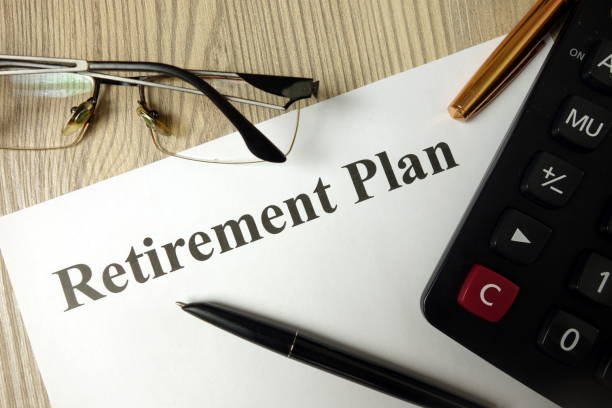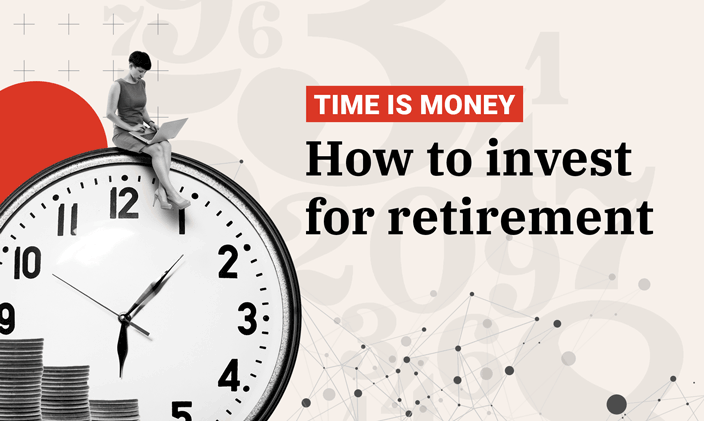Imagine yourself on a beach, basking in the sun, finally free from the daily grind. That’s the dream of retirement, and a well-structured investment plan is your ticket. But where do you even begin? Think of retirement planning as packing for a long trip. You wouldn’t just throw random things in a bag, would you? You’d pack what you need to be comfortable and have fun.
Retirement planning is similar. It’s about saving money to enjoy your golden years without financial stress.
But between daydreams and reality often lies a mountain of questions: How much will I need to live comfortably? When should I start saving? How do I invest my money wisely? Don’t worry; I’ll be sharing a proper guide on how to start and maintain a retirement investment plan.
Understanding Retirement Investment Plans

Retirement – a time for relaxation, exploration, and finally doing what you love. But without proper planning, those golden years can become financially stressful. This guide will be your compass, navigating you through retirement plans and helping you choose the best option for your needs.
Retirement Investment Plans And Benefits
Consider investment plans as special accounts designed to grow your money for your golden years. They offer several benefits:
- Tax Advantages: Contributions are often tax-deductible, lowering your current tax bill. Earnings in some plans may also grow tax-free or at a reduced rate.
- Compound Interest: Your money grows over time, not just from your contributions but also from the interest earned. Retirement plans allow this growth to happen tax-deferred or tax-free, accelerating the snowball effect.
- Employer Matching: Many companies match a portion of your contributions, giving you free money!
Types of Retirement Accounts
Did you know that 54.4% of all families in the U.S. have retirement accounts? Having a retirement account can significantly enhance your financial security. There are several retirement accounts available, each with its own rules and benefits. Here’s a breakdown of the most common ones:
1- 401(k)
- In the fourth quarter of 2023, Americans had $7.4 trillion invested in 401(k) plans and $13.6 trillion in IRAs.
- Many employers offer this option, allowing employees to contribute a portion of their paycheck before taxes are deducted.
- Contributions are tax-deductible, lowering your current taxable income.
- Earnings typically grow tax-deferred until withdrawal in retirement, which may be taxed as income.
- May have contribution limits and employer matching programs.
2- IRA (Individual Retirement Account)
- You set up an individual account independently, regardless of your employer.
- Offers tax advantages, with two main options:
- Traditional IRA: Contributions may be tax-deductible, and earnings grow tax-deferred. Withdrawals in retirement are taxed as income.
- Roth IRA: Contributions are made with after-tax dollars (not deductible from current income), but qualified withdrawals in retirement are tax-free.
3- SEP IRA (Simplified Employee Pension IRA)
- Designed for self-employed individuals and small business owners.
- The employer makes contributions directly to an IRA set up for each employee (including themselves).
- Contributions are tax-deductible for the employer and may be tax-deductible for the employee (up to a limit).
4- SIMPLE IRA (Savings Incentive Match Plan for Employees)
- Designed for small businesses with 100 or fewer employees.
- Employers must offer matching contributions for employee contributions.
- Contributions are made with salary reductions (before taxes) and may be tax-deductible for employees.
3 Key Steps to a Personalized Retirement Plan
Now that you understand the different types of retirement accounts let’s move on to the exciting part – crafting your personalized plan! Here’s a roadmap to guide you through the key steps:
Step 1: Research and Education
Knowledge is power, especially when it comes to your financial future. Here’s what you need to explore:
- Your Employer’s Plan: If your company offers a retirement plan (like a 401(k)), understand its contribution limits, investment options, and employer matching programs.
- Available IRAs: Research different IRAs (Traditional, Roth, SEP, SIMPLE) and their eligibility requirements, contribution limits, and tax implications.
- Retirement Calculators: Online tools can help you estimate how much you’ll need to save for a comfortable retirement. Consider your desired lifestyle, current income, and estimated retirement age.
Step 2: Consider Consulting a Financial Advisor
Financial advisors can provide personalized guidance based on your unique circumstances. They can help you:
- Choose the Right Accounts: Based on your income, age, and goals, they can recommend suitable retirement accounts and investment strategies.
- Develop a Contribution Plan: They can help you determine a realistic and sustainable savings amount to reach your retirement goals.
- Asset Allocation: Advisors can help you create a diversified investment portfolio that aligns with your risk tolerance and time horizon.
Step 3: Create a Timeline
Retirement might seem far away, but time has a way of flying by. Setting a clear timeline will help you stay focused and motivated. Here’s what to consider:
- Your Desired Retirement Age: When do you envision yourself retiring?
- Current Age: The sooner you start saving, the more time your money has to grow through compound interest.
- Financial Goals: Estimate your desired retirement income and lifestyle to determine how much you need to save.
Choosing the Right Investment Options

Now that you’ve tackled your retirement planning journey, it’s time to explore the building blocks of your nest egg—investment options. Thanks to the power of compound interest, these vehicles will save your hard-earned savings and grow them over time. But with so many choices, how do you pick the right ones? Let’s check out some investment options and diversification strategies.
Investment Options
Here’s a breakdown of some standard investment options, each with its risk-reward profile:
- Stocks: Ownership shares in individual companies. Stocks offer the potential for high returns but have a higher risk of loss.
- Bonds: Essentially, IOUs from governments or corporations. Bonds offer regular interest payments and are generally considered less risky than stocks, but also offer potentially lower returns.
- Mutual Funds: Professionally managed baskets of various investments like stocks, bonds, or a mix of both. Mutual funds offer diversification and convenience but come with management fees.
- ETFs (Exchange-Traded Funds): Similar to mutual funds, they trade throughout the day like stocks. ETFs offer diversification, lower fees than some mutual funds, and high liquidity.
- Real Estate: It involves investing in physical properties like houses or commercial buildings. It can offer rental income and potential appreciation in value, but it also requires management responsibilities and can be illiquid (not easily converted to cash).
Finding the Right Mix: Diversification Strategies
The key to navigating the investment landscape lies in diversification. Don’t put all your eggs in one basket! Spreading your investments across different asset classes (stocks, bonds, real estate) helps mitigate risk. A young investor with a long time horizon might tolerate a higher percentage of stocks for potentially higher growth, while someone nearing retirement might prioritize stability with a higher bond allocation.
Factors to Consider When Choosing Investments
- Risk Tolerance: How comfortable are you with potential losses?
- Investment Timeframe: How long do you have until retirement?
- Financial Goals: How much income do you need in retirement?
- Investment Fees: Understand the associated costs of each option.
Remember: There’s no one-size-fits-all approach. Consulting a financial advisor can help you create a personalized investment portfolio that aligns with your unique circumstances and risk tolerance.
Opening a Retirement Account
Now that you’ve explored investment options and crafted your personalized plan, it’s time to translate those dreams into reality – opening your retirement account! Here’s a roadmap to guide you through the process:
1- Choosing a Financial Institution
There are several options to consider when opening a retirement account:
- Employer-Sponsored Plans (401(k), 403(b)): If your employer offers a plan, this is often the simplest and most convenient option. You can usually contribute directly from your paycheck, and some companies offer matching contributions, essentially free money to boost your savings!
- Traditional IRA or Roth IRA: If you don’t have an employer-sponsored plan or want to save additional money beyond it, you can open an IRA at various institutions like banks, online brokers, or investment firms. Each institution will offer different investment options and fees, so do your research and compare.
Factors to Consider
- Account Fees: Compare annual fees, expense ratios for mutual funds or ETFs, and transaction fees.
- Investment Options: Does the institution offer various investment choices to align with your strategy?
- Customer Service: Consider the level of support and guidance available, especially if you’re a new investor.
2- Completing the Necessary Paperwork
Once you’ve chosen a financial institution, it’s time for the paperwork. This typically involves:
- Account Application Form: Providing basic personal and financial information.
- Investment Selection: Choosing how you want your money invested (specific stocks, bonds, mutual funds, or a pre-built asset allocation model).
- Tax Forms: Depending on the account type (Traditional IRA vs. Roth IRA), you might need to complete additional forms to determine your eligibility and tax implications.
3- Funding Your Account
Now for the exciting part – funding your account! Many institutions offer various ways to contribute:
- Direct Deposit: Set up automatic contributions from your paycheck or bank account to ensure consistent savings.
- Electronic Transfers: Transfer funds electronically from your existing accounts.
- Check Deposits: Some institutions may allow sending a check to deposit funds.
How to Maintain a Retirement Investment Plan
Maintaining a financial investment plan ensures your savings grow and align with your financial goals. Here’s a step-by-step guide on how to effectively preserve your retirement plan:
- Annual Check-Up: Conduct a thorough review of your retirement plan at least once a year.
- Benchmark Progress: Compare your current savings and investment returns against your retirement goals to ensure you are on track.
- Major Life Events: Reassess your plan when you experience significant life changes such as marriage, divorce, the birth of a child, or a change in employment.
- Health Considerations: Factor in any changes in health that may affect your retirement timeline or healthcare expenses.
- Periodic Rebalancing: Adjust your investment portfolio periodically to maintain your desired asset allocation.
- Risk Management: Shift your investments to more conservative options to reduce risk as you approach retirement age.
- Stay Informed: Keep up with financial news and market trends that may impact your investments.
- Economic Indicators: Pay attention to economic indicators like interest rates, inflation, and market performance.
- Utilize Tax-Advantaged Accounts: Take advantage of tax-advantaged retirement accounts such as 401(k)s and IRAs.
- Catch-Up Contributions: If you are 50 or older, use catch-up contributions to boost your retirement savings.
- Understand RMD Rules: Familiarize yourself with the rules regarding RMDs, which typically begin at age 72 for most retirement accounts.
- Plan Withdrawals: Strategize your withdrawals to meet RMD requirements while minimizing tax impacts.
FAQs
What is the best age to start a retirement plan?
The best age to start a retirement plan is as early as possible. Starting in your 20s allows your investments to benefit from compound interest over a longer period, which can significantly increase your retirement savings. However, it is never too late to start, and beginning a retirement plan at any age is better than not having one.
How much should I contribute to my retirement plan?
The amount you should contribute to your retirement plan depends on various factors, including income, retirement goals, and age. A common rule of thumb is to save at least 15% of your annual income. If you start later in life, you may need to contribute more to catch up. Additionally, take advantage of employer matches if available, as this is essentially free money for your retirement.
What are the penalties for early withdrawal?
Penalties for early withdrawal from retirement accounts depend on the type of account:
- 401(k) and Traditional IRA: Withdrawals before age 59½ typically incur a 10% early withdrawal penalty plus any applicable income taxes.
- Roth IRA: Contributions (but not earnings) can be withdrawn without penalties. Withdrawals of earnings before age 59½ may incur taxes and a 10% penalty unless an exception applies.
- Exceptions: Certain circumstances, such as significant medical expenses, disability, or first-time home purchases, may allow penalty-free withdrawals.












